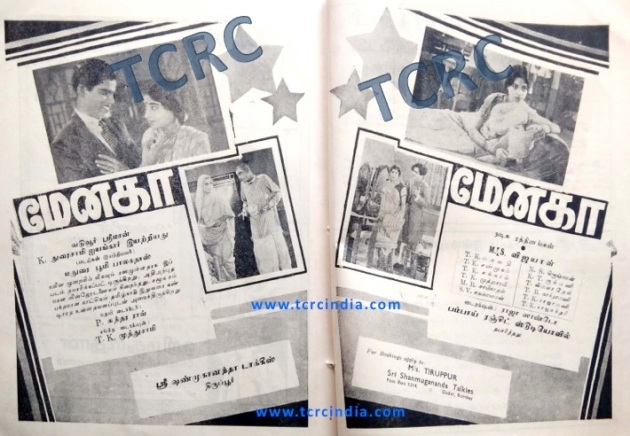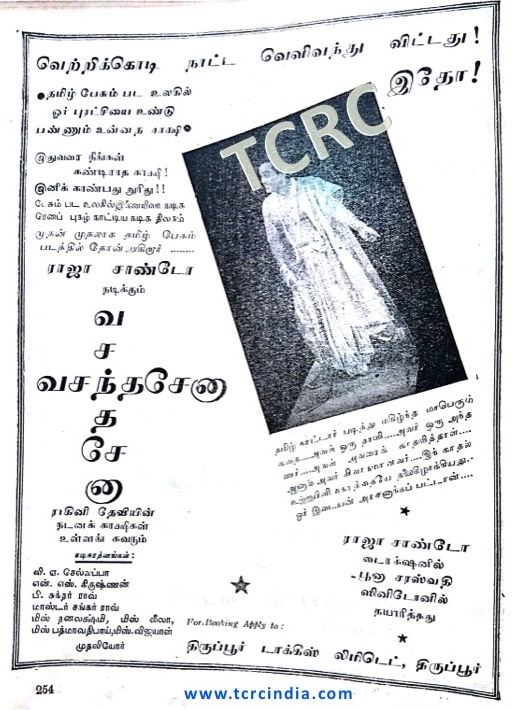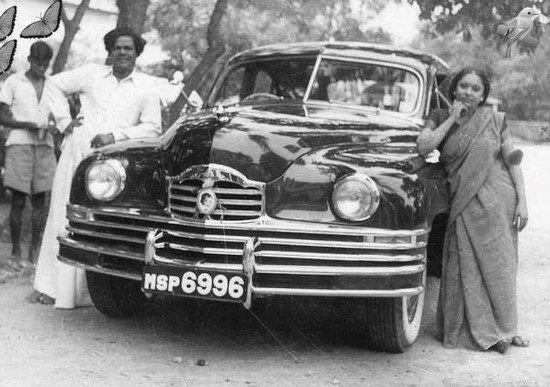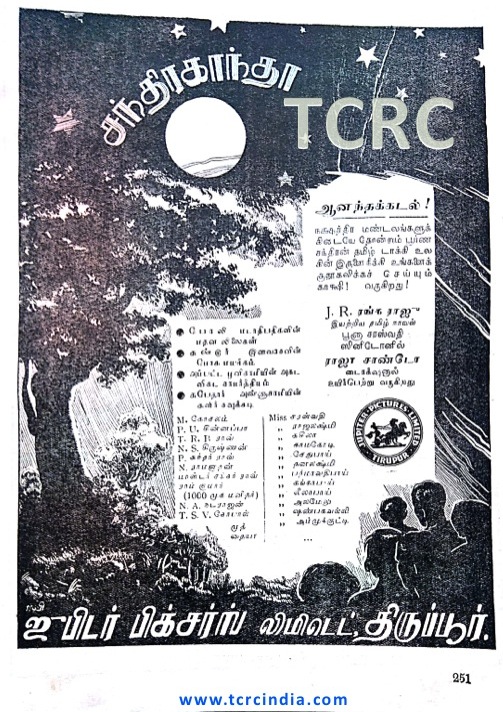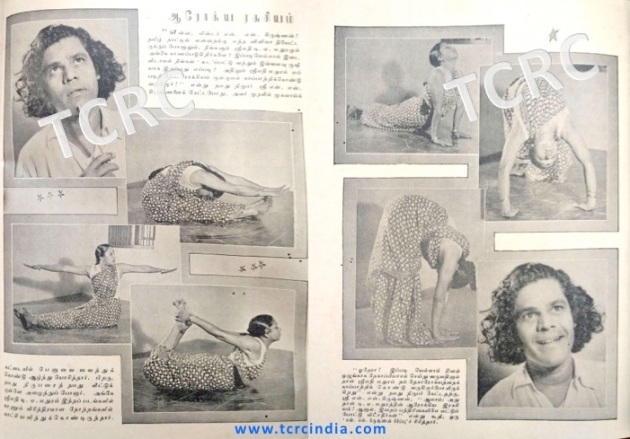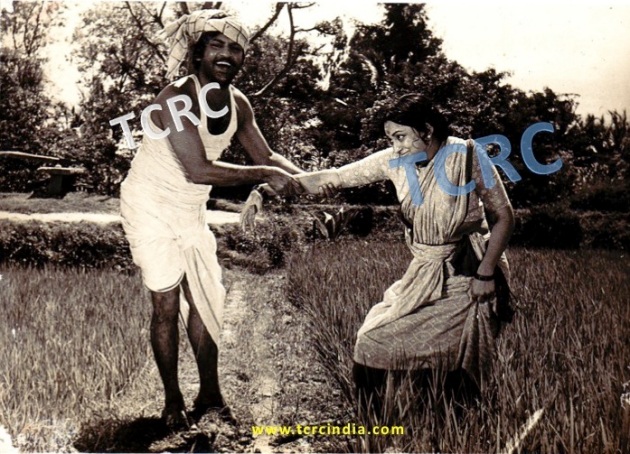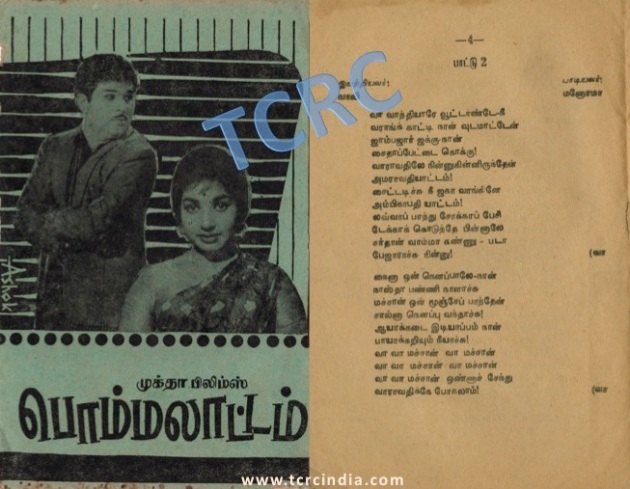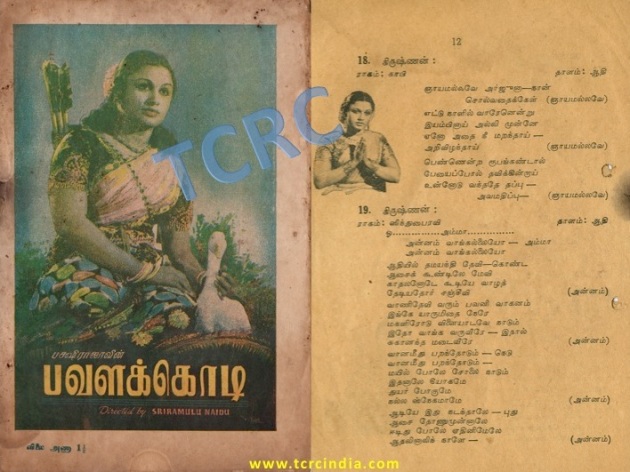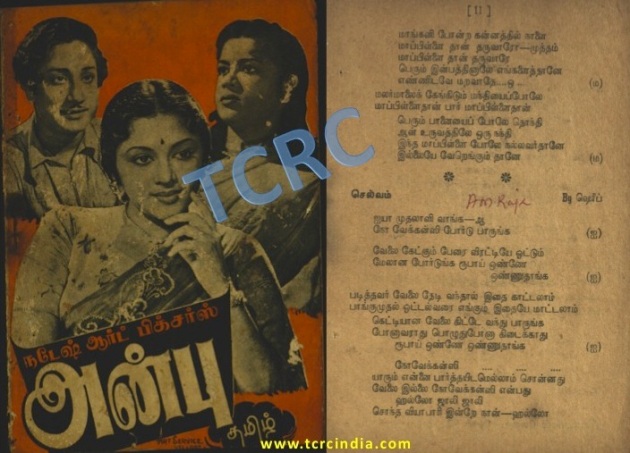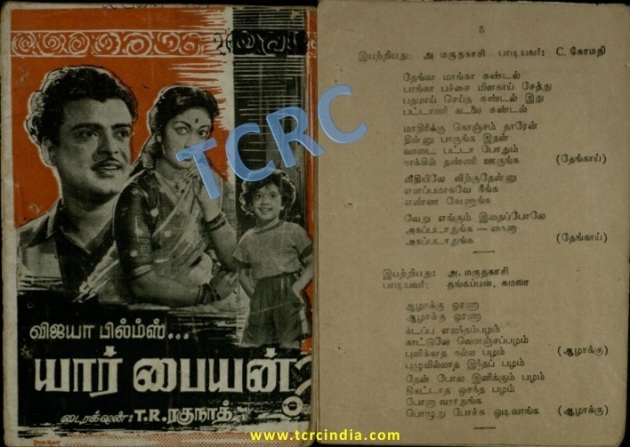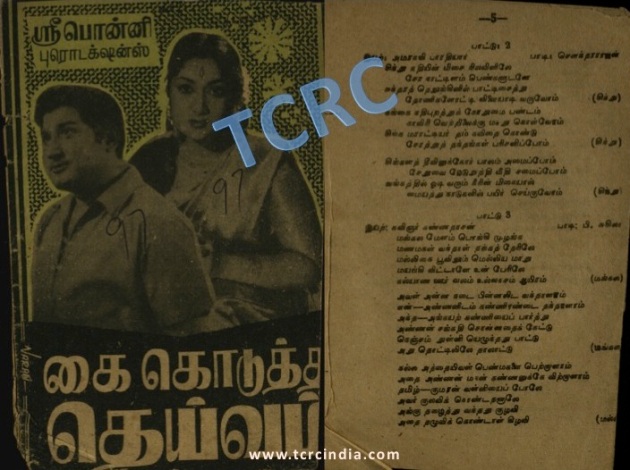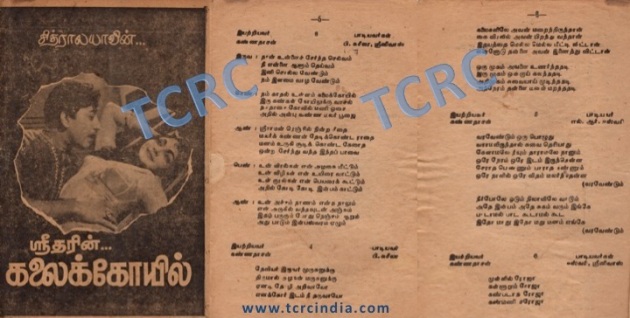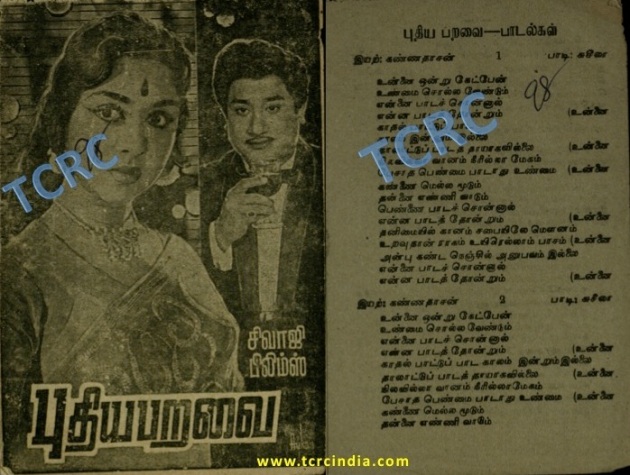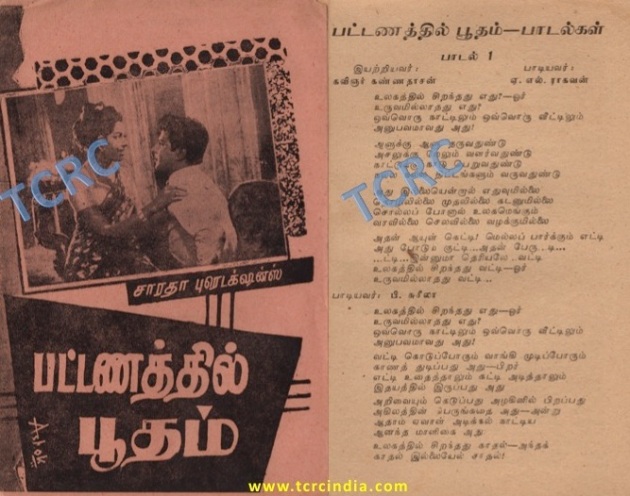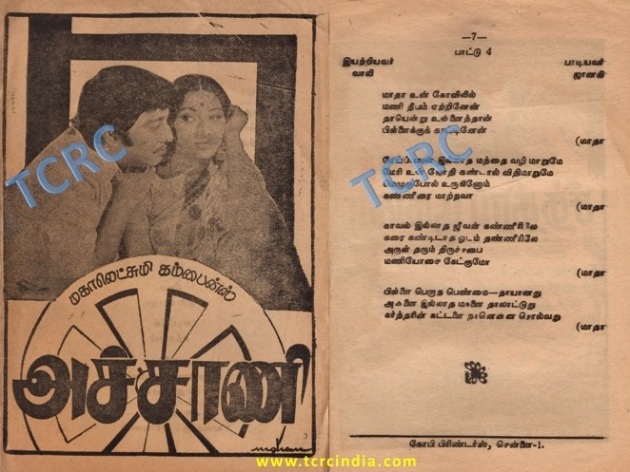By P.V. Gopalakrishnan
We cannot imagine a life without festivals. The customs, colours, flavours, aromas, warmth, joy and whatnot that they bring to cement family & friendly relationships and bond the community at large! It’s hard to overstate their importance in our lives and the life of a community. Festivals are the very spirit of mankind. Through them, we are made to spread happiness and share good times. They motivate us to be better people and to share our joy with the world.
Every country has their own festivals, dependent on their culture & civilizations, such as The Beer Festival of Germany and The Tomato Festival of Spain. But when it comes to India, there are so many festivals as divergent of the various cultures & beliefs that our country is composed of. India can be easily called a Country of Festivals that is spread throughout the year. This brings colours, aroma, gaiety, bonding, culinary delights everything to the fore.
Our films, after all, represent the way we live here. As such, the screenplays of our Indian films do capture these festivities in some sequence or the other. We will look at some of the important Festivals as they were shown in our films.
Diwali, the most prominent & popular of all Hindu festivals, is celebrated with a lot of pomp and show. During this festival of lights, people wear new clothes, participate in family puja, burst crackers (now increasingly without it), and share sweets with friends & families. Sridhar’s Directorial debut was ‘Kalyana Parisu’ (1959) in which he also wrote the story & screenplay. It was a highly acclaimed film, which was later made in Hindi too as ‘Nazrana’. This triangular love story featured a song-sequence celebrating Deepavali as it is celebrated in the South.
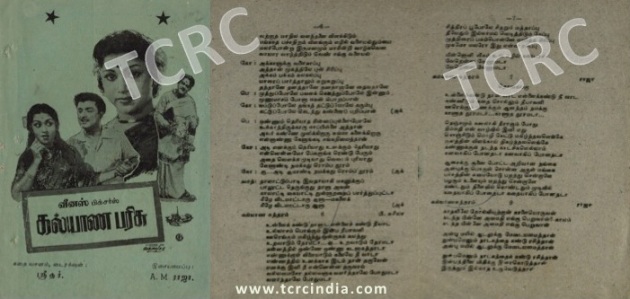
Song book of Kalyana Parisu with the page containing the song UNNAI KANDU NAAN PC: From the archives of TCRC
Mid-January is an important time in the Tamil calendar as it marks the Harvest Festival, Pongal, which is the quintessential ‘Tamil Festival’. Pongal marks the traditional occasion for thanks giving to Mother Nature, for celebrating the life cycles that give us grain. This is the height of any culture, so to say. They say ‘Thai pirandhaal vazhi pirakkum’, and believe that knotty family problems will be solved with the advent of the Tamil month Thai that begins on Pongal day. ‘Thai pongalum vanthathu’ from the film ‘Mahanadhi’ showcases the important visual aspects of this great Festival.
Navrathri festival is celebrated throughout India though in different ways. In Gujarat, it is a nine-day celebration with rejuvenating Garbha nights and highly energetic Dandiya Raas dances, when People dress in beautiful, colorful traditional clothes bringing youthful environment. Basically, this festival denotes the celebration of the Goddess Amba or Sakthi as sheer Power in nine different forms. The South of India celebrates it with the households making a colorful Expo of dolls, known as ‘Kolu’. It is believed, kolu dolls represent the assembly of Goddess Durga. Best-dressed womenfolk exchange visits to each other’s Kolu where they sing devotionals & are given haldi, kum kum & prasadam. Durga Puja & Dusserah are variants of celebrating the Goddess!
Catch Nadigaiyar Thilakam Savithri in a Navarathiri Kolu sequence song from he film ‘Navarathiri’ in which Doyen Sivaji Ganesan donned nine different characters.
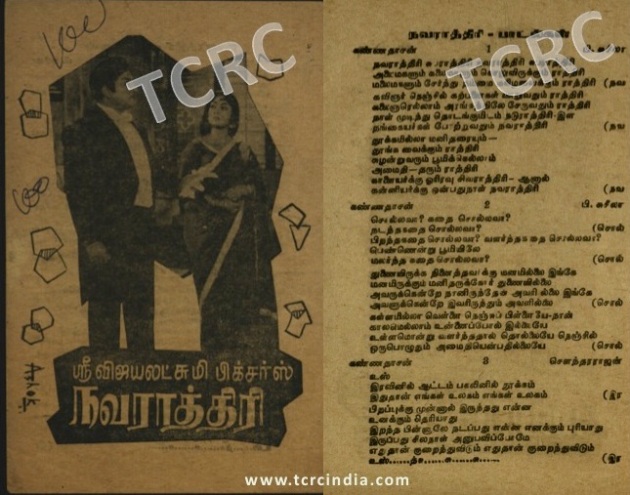
Song book of Navarathri with the page containing the song NAVARATHIRI SUBHARATHIRI PC: From the archives of TCRC
Holi, known as the festival of colors, too is one of the important festivals, celebrated mostly in North India, with a lot of fervor. On the eve of Holi, people make huge Holika bonfires and sing and dance around it. On the day of Holi, people gather in open areas and apply dry and wet colors of multiple hues to each other, with some carrying water guns and colored water filled balloons. Holi signifies the victory of good (Prince Prahlad) over evil (Holika) and the arrival of spring. Holi falls on Full moon of March of the Gregorian calendar. There are many Hindi film songs on Holi but this song ‘Anthi mazahai megam’ from Nayakan (Tamil), filmed in the erstwhile Venus Studios, stands out as capturing the spirit of Holi. Why Holi in a Tamil fim? Well, the ‘Nayakan’ character played by Kamal was based on the Tamil Don of erstwhile Bombay, Velu Naicker of Dharavi!
Krishna Janmashtami or Gokulashtami is again a beautiful one among the most important religious festivals of India. its celebrations in Mathura and Vrindavan are notable. Visiting temples, praying, dancing, and singing bhajans (hymns) at midnight is a part of the celebrations of the birth of Lord Krishna with kids, often, dressing up as Lord Krishna this day. As part of Janmashtami festivities, breaking pots hung from lofty heights by revelers forming a human pyramid, is common sight. The Shammi Kapoor starred Hindi film Bluff Master featured the song ‘Govind Aalaa re’ showing the revelry of ‘handi’ breaking, which in Tamil is known as ‘Uri adi’.
Ganesh Chaturthi, another important Hindu religious festivals, is a ten-day affair of colorful festivities, in places like Mumbai. Huge handcrafted Ganesh idols are installed in homes or public pandals and Pujas are performed, before the deity is taken with grand fan fare on the last day for immersion. Cultural activities of singing, dancing and theater go hand in hand on this occasion of great celebration of the elephant faced God. The film Agnipath featured a typical street procession atmosphere during Ganpathi festival, normally witnessed in Maharashtra, charged with devotion & celebration. The song ‘Sree Ganesha Deva’ from the film is an all time favourite of Ganesh devotees.
Onam is the most important festival of the state of Kerala. It is also a harvest festival and is celebrated with joy and enthusiasm by people of all communities. According to a popular legend, the festival is celebrated to welcome King Mahabali, whose spirit is said to visit Kerala at the time of Onam. Carnival of Onam lasts from four to ten days. Elaborate feasts, folk songs, elegant dances, energetic games, caparisoned elephant, Snake Boat races and flower decorations (PookaLam) all are a part of the dynamic festival called Onam. We feature ‘Thiruvavani Ravu’ bringing the essence of Onam from the Malayalam movie ‘Jacobinte Swarga Rajyam’.
Raksha Bandhan festival, aka Rakhee, is one of the important festivals in the North. Celebrated each year in the month of August, this ceremony takes place on the full moon day of Shravan. The festival highlights the bondage between siblings. On this propitious day, a sister ties the sacred thread of Rakhi to her brother’s wrist for his prosperity & long life, even as the brother promises to protect his sister from all hardships of life. Rakhi is an emblem of love and protection. This festival of sibling bondage between sisters & brothers was showcased in the film ‘Chotti Behen’ in the song ‘Bhaiya mere Rakhi ka bandhan’.
Christmas is an annual festival commemorating the birth of Jesus Christ, observed most commonly on December 25, though in some parts of the world like Russia it is observed in January. Christmas, religiously celebrated by the vast majority of Christians, is celebrated by other communities as well, as a cultural festival. There was a song & dance featured celebration of Christmas in the Tamil film ‘Kanne Pappa’, which we bring in here.
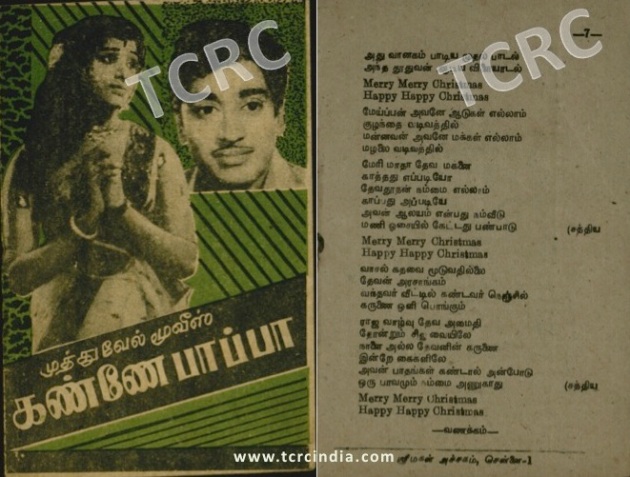
Song book of Kanne Pappa with the page containing the song Merry Merry Christmas PC: From the archives of TCRC
In the Islamic Faith, Eid al-Fitr (Feast of breaking the fast) is an important celebration by Muslims worldwide that marks the end of Ramadan, the Islamic holy month of religious fasting. During the holy month of Ramadan, muslims fast from dawn to dusk when they refrain from consuming food & liquids, smoking, and engaging in any pleasures. They are supposed to carefully abstain from sinful behavior that may negate the reward of fasting, such as false speech (insulting, backbiting, cursing, lying, etc.) and fighting. Chand Raat is an important day in the month of Ramadan which marks the end of Ramzan fasting as the moon (Eid ka Chand) sighting is done.
Here is a song on the happy sighting of Eid Moon in the Hindi Film ‘Barsaat ki Raat’

